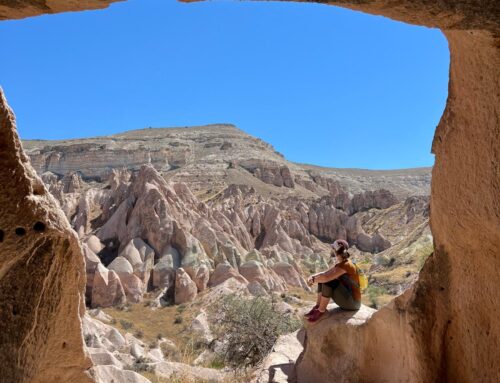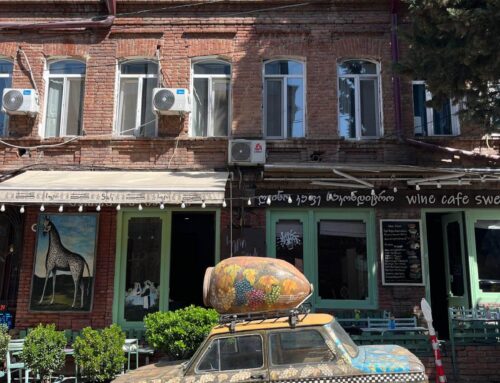Discovering Thailand
Whenever we talk about Thailand to other travelers, it seems to be super high on everyone’s list of either favorite places or places they want to go next. And for good reason. Thailand is pretty amazing. It honestly has it all from mountains in the north to beaches in the south, with a combination of big cities like Bangkok to smaller villages, travelers can find just what they are looking for here.
After visiting so many countries, we can confidently say that Thailand is one of our top favorite countries for sure. Check out more details below to discovering Thailand and making it a trip to remember!
Visa Process in Thailand
Thailand maintains very friendly political relations with many countries which makes navigating the visa process fairly simple. Nationals of 93 countries are entitled to visa exemption which means they can enter visa free for up to 60 days. Upon arrival, all you need to do is simply walk to customs and get a stamp in your passport. It’s that easy. Check here to see if your passport is on the list.
The second way is a visa on arrival which is offered to 23 different countries. Finally, the third option is to apply before for the visa at your local Thai Embassy.
Pro tip: one of the most confusing parts for us was after landing and going towards customers. We had to walk past all these signs pointing you to different places or different things. For us as US passport holders, we did not need to follow the Visa on Arrival signs at the airport. We just needed to head straight to the customs line.
Always make sure to check your country’s requirements before traveling.
Seamless Connectivity: Thailand Cell Phones and SIM Cards
This is the first time we used the Airalo app and it couldn’t have been easier. We bought our eSim package before we flew and in the airport in the customs line, we activated our eSim. That’s it! We did have to load our passport and a picture of ourselves to the Airalo app but that’s pretty standard when buying a SIM card. Plus we didn’t have to stand in any lines at the airport and we were off so quickly! I can’t recommend this more. Click here to use our referral code to get $3 off your first purchase on Airalo.
If you want to go old school and get a SIM card when you land, there are tons of cell phone store fronts in the airport where you can buy any type of package.
Managing Payments in Thailand
Make sure to take out cash and have it with you as you will need it everywhere. Very few places take credit cards. We only were able to use our card at the hotel and a few but not all stores and restaurants in malls. Places like 7-11 only accept credit cards over a certain amount and our purchases were too small so we could only use cash.Also note that while many vendors have a QR code you can scan, it only works if you have a Thai bank account. We tried to pay with a foreign Visa credit card and it wouldn’t let us so cash is king here.
A tip we tried this time was exchanging money in our home country at a foreign currency exchange a week before we left instead of at the airport to avoid the higher fees and hassle when we landed. It made for a smooth transition into the country for sure. ATMs charge a 220 baht fee to take cash out and they asked if you’d like to accept the foreign translation fee. We declined as the fee with our bank back home is always lower than the ATM foreign translation fee. Just another way to save some money while traveling. With the advent of visa-free travel for Chinese nationals, payment methods like WeChat Pay and Alipay are becoming more common as well.
Bangkok’s Two Airports: Navigating BKK and DMK
There are two main airports in Bangkok. Suvarnabhumi Airport (BKK) stands as the largest hub, welcoming most international flights on the east side of the city. Conveniently, the Blue and Red line MTR connect directly from BKK to the city, ensuring easy access to the city once you land. However, it’s essential to note that several international and most domestic flights depart from Don Mueang Airport (DMK), located north of the city. Currently, public transportation to DMK is limited, with the best option being a train to a bus, albeit with potential service restrictions. For a smoother journey, consider alternatives such as Bolt taxis, which offer efficient transfers at a reasonable cost. Our experience with a Bolt taxi to DMK cost us 200 baht, with an additional 130 baht toll fee on the highway. Opting for the highway significantly reduced our travel time to just 35 minutes, compared to the hour-long alternative route.
Discovering Thailand by Getting Around
Exploring Bangkok is a breeze with its efficient transportation options. While there are numerous paid tour services available if you want to go that route, we found navigating the city via the subway to be straightforward. Bangkok boasts two distinct train systems: the underground Metro (MRT) and the above-ground Bangkok Skytrain (BST). Purchasing tickets is a breeze; simply approach the ticket counter, indicate your destination (we relied on GoogleMaps for directions), and purchase your ticket. The process is smooth and the staff are incredibly helpful.
For more flexibility, we highly recommend using ride-hailing apps like Grab or Bolt for taxis and motorbikes. Ordering a ride is easy and you’ll know the fare upfront. While you can link a credit card to your account, we opted to pay the driver in cash, which was widely accepted and convenient.
Navigating cities like Bangkok on foot offers a delightful way to immerse yourself in the local culture. During our trip, strolling through the city’s narrow alleyways, picturesque canals, and charming side streets was a highlight of our trip for sure. The sidewalks are well-kept, providing a comfortable walking experience. However, it’s essential to be mindful of crosswalks, as traffic drives on the left side of the road, which is opposite of what I’m used to as an American.
Language and Communication in Thailand
While we don’t speak Thai, navigating the country was surprisingly easy. Signs, especially in public transportation, restaurants, and on the streets, are commonly displayed in three languages: Thai, English, and Chinese. Most locals spoke enough English to assist us, although not always in-depth. Ordering in restaurants was typically hassle-free, with simple exchanges focused on choices like pork, chicken, or beef, and preferences for spiciness, often involving some pointing.
It’s courteous to learn a few basic phrases though. “Hello” is “sawatdi,” and “Thank You” is “Khop Khun Krap” for males or “Khop Khun Ka” for females, with the gender-specific ending determined by the speaker, not the recipient.
Where to go: Exploring Thailand’s Must See Destinations
Bangkok is a great launching point with the international airport but it’s also a fun city to explore. I’d recommend a few days in the city itself. Also try to visit over a weekend as two of our favorite things (Chatuchak Market and Floating Markets) were only on the weekend.
Southern Thailand beckons with its pristine islands and breathtaking beaches. Explore renowned destinations such as Phuket, Krabi, Koh Samui and Koh Phi Phi.
Northern Thailand offers a serene escape with its majestic mountains and ample hiking opportunities. Chiang Mai, a cultural hub, awaits with its rich heritage and tranquil ambiance. Be mindful of visiting during the burning season between Feb to April, as air pollution levels can rise significantly during this time.
Best Time of Year for Discovering Thailand
In Thailand, the weather varies throughout the year with three distinct seasons.
Hot Season (March – May): This period is characterized by high temperatures and humidity, making it ideal for beachgoers but less comfortable for extensive outdoor activities.
Rainy Season (June – September): While rainfall is common during this time, showers are typically short-lived and followed by sunshine. However, it’s advisable to be prepared for occasional downpours, especially in the afternoons.
Cool Season (October – February): This season offers more pleasant temperatures, making it a popular time for travelers. With cooler and drier weather, it’s perfect for exploring both urban areas and natural attractions.
Safety in Thailand
Is Thailand safe? Absolutely. Thailand boasts some of the friendliest people we’ve ever encountered. Even in bustling train stations, locals were quick to lend a hand. While signs warning of pickpockets dotted crowded areas, we never encountered any issues. Whether out late enjoying the vibrant nightlife or exploring during the day, safety was never a concern. Just remember to stay vigilant and ensure a safe journey back to your accommodations if you’re out late.
What to eat and drink in Thailand
The food in Thailand is so fresh and delicious. Every bite is exciting and flavorful. Here are some of our favorites that we hope you try! Quench your thirst with the bright orange Thai Tea. It’s a delightful blend of black tea and sweetened condensed milk, vibrant in color and readily available across the country. Treat your taste buds to the heavenly sweetness of mango sticky rice, a beloved Thai dessert that perfectly balances ripe mangoes with sticky rice and coconut milk. While Pad Thai is a popular choice, we felt like it was always served too sweet and we didn’t like it as much. Instead, we savored dishes like grilled pork, crispy pork, kale stir-fry with basil pork, and refreshing papaya salad.
We hope you enjoy exploring the diverse culinary landscape of Thailand. It offers everything from vegetarian delights to flavorful noodles and rice dishes. Embrace the local cuisine for its affordability and unparalleled taste sensations.
Discover more from Penley Perspective
Subscribe to get the latest posts sent to your email.













